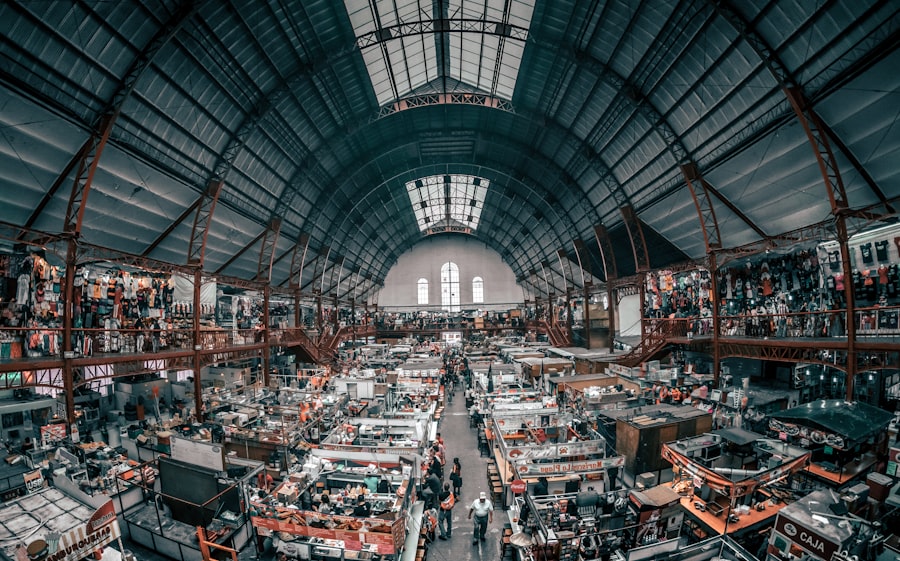The transformation of human settlements into urban centers is a complex narrative that spans thousands of years, marked by significant social, economic, and technological changes. Initially, early human communities were primarily nomadic, relying on hunting and gathering for sustenance. As agricultural practices emerged around 10,000 BCE, people began to settle in one place, leading to the establishment of permanent settlements.
These early agrarian societies laid the groundwork for the first towns, as surplus food production allowed populations to grow and diversify. Settlements like Çatalhöyük in modern-day Turkey exemplify this transition, showcasing early urban characteristics such as communal living and specialized crafts. As these settlements evolved, they began to develop into more complex urban centers.
By the time of the Bronze Age, around 3000 BCE, cities such as Uruk in Mesopotamia emerged, characterized by monumental architecture, administrative systems, and social stratification. The growth of these towns was often facilitated by their strategic locations near rivers or trade routes, which provided access to resources and markets. The rise of urban centers was not merely a demographic shift; it represented a fundamental change in human organization, with the establishment of governance structures, religious institutions, and economic systems that would shape societies for millennia.
The interplay between agriculture, trade, and urbanization created a dynamic environment where towns could flourish and evolve into the bustling cities we recognize today.
Key Takeaways
- Towns have evolved from simple settlements to complex urban centers over time.
- Coins played a crucial role in facilitating trade and commerce by providing a standardized form of currency.
- Commerce has had a significant impact on the growth and development of towns, leading to increased population and economic activity.
- The development of markets and trade routes in urban centers further fueled the growth of towns and their economic prosperity.
- Coins have influenced the expansion of economic activities in towns by enabling easier transactions and fostering economic growth.
The Role of Coins in Facilitating Trade and Commerce
The introduction of coins marked a pivotal moment in the history of trade and commerce, revolutionizing the way transactions were conducted. Before the advent of coinage, barter systems dominated economic exchanges, where goods and services were traded directly. This method had inherent limitations, as it required a double coincidence of wants—both parties needed to desire what the other offered.
The creation of coins provided a standardized medium of exchange that simplified transactions and expanded the scope of trade. The first known coins were minted in Lydia around 600 BCE, made from electrum—a naturally occurring alloy of gold and silver—bearing stamped images that indicated authenticity and value. Coins not only facilitated local trade but also enabled long-distance commerce by providing a universally accepted currency.
Merchants could travel greater distances without the burden of carrying bulky goods for barter. This newfound efficiency in trade led to increased economic interactions between different regions and cultures. For instance, the spread of coins throughout the Mediterranean facilitated trade networks that connected diverse civilizations, from the Greeks to the Phoenicians.
The use of coins also fostered trust among traders; the standardized value assigned to coins reduced the risk associated with transactions, encouraging more people to engage in commerce. As a result, coins became integral to the economic fabric of societies, laying the foundation for more sophisticated financial systems.
The Impact of Commerce on the Growth and Development of Towns

Commerce has historically been a driving force behind the growth and development of towns. As trade expanded, towns became vital hubs for economic activity, attracting merchants, artisans, and laborers seeking opportunities. The establishment of marketplaces within towns served as focal points for commerce, where goods from various regions could be exchanged.
This concentration of economic activity not only stimulated local economies but also encouraged population growth as people migrated to urban areas in search of better livelihoods. The impact of commerce on town development can be illustrated through examples such as Venice during the Middle Ages. Positioned strategically along trade routes between Europe and Asia, Venice flourished as a commercial powerhouse.
Its merchants engaged in extensive trade with distant lands, importing spices, silk, and other luxury goods while exporting local products like glass and textiles. The wealth generated from commerce led to significant urban development; grand palaces and public buildings were constructed, reflecting the city’s prosperity.
The Development of Markets and Trade Routes in Urban Centers
The establishment of markets and trade routes was crucial for the evolution of urban centers into vibrant economic hubs. Markets served as organized spaces where buyers and sellers could converge to exchange goods and services.
In many cases, markets were held weekly or seasonally, creating rhythms of economic activity that shaped the lives of townspeople. Trade routes played an equally important role in connecting urban centers with surrounding regions and distant lands. The Silk Road is perhaps one of the most famous examples of an extensive trade network that facilitated not only the exchange of goods but also cultural interactions between civilizations.
Cities along this route, such as Samarkand and Bukhara, thrived as commercial centers where merchants from diverse backgrounds converged. The establishment of these routes was often driven by demand for specific goods; for instance, spices from Southeast Asia or textiles from India became highly sought after in European markets. As urban centers grew along these trade routes, they developed infrastructure such as roads and ports to support increased commerce, further solidifying their importance in regional economies.
The Influence of Coins on the Expansion of Economic Activities in Towns
The influence of coins on economic activities within towns cannot be overstated; they served as catalysts for expanding trade networks and stimulating local economies. With a reliable currency in circulation, merchants could engage in more complex transactions that went beyond simple barter. This newfound flexibility allowed for credit systems to emerge; merchants could extend loans or engage in deferred payments using coins as collateral.
Such practices laid the groundwork for modern banking systems and financial institutions. Moreover, coins facilitated specialization within towns by enabling artisans and craftsmen to focus on producing specific goods rather than engaging in multiple trades to meet their needs through barter. For example, a blacksmith could produce tools or weapons while relying on coins to purchase food or clothing from other tradespeople within the town.
This specialization not only improved efficiency but also enhanced the quality of goods produced, contributing to overall economic growth. Additionally, as towns became more prosperous due to increased commerce facilitated by coins, they attracted skilled laborers and entrepreneurs seeking opportunities, further fueling economic expansion.
The Interconnection of Town Growth, Coins, and Commerce in Historical Context

The Roman Empire: A Model of Interdependence
During the Roman Empire’s expansion, cities thrived due to improved infrastructure such as roads and ports that facilitated trade across vast distances. Roman coins became symbols of economic stability and trustworthiness, promoting commerce throughout the empire.
Medieval Europe: The Emergence of Autonomous Towns
In medieval Europe, the revival of trade following the fall of Rome led to the emergence of towns that were often granted charters allowing them to mint their own coins. This autonomy not only empowered local economies but also fostered a sense of community identity among townspeople.
A Lasting Legacy in Modern Cities
The growth of merchant guilds further exemplified this interconnection, regulating trade practices while advocating for their members’ interests within town governance structures. As we examine historical contexts across different civilizations, it becomes clear that town growth was intricately linked to advancements in coinage and commerce. Each element played a vital role in shaping societies’ economic landscapes, influencing everything from social hierarchies to cultural exchanges. The legacy of this interconnection continues to resonate today as modern cities navigate complex economic systems rooted in historical practices that began with simple settlements evolving into bustling urban centers driven by trade and currency.
For a fascinating look at how technology has transformed education, check out The Evolution of Classroom Technologies: Enhancing Education in the Digital Age. This article explores the ways in which advancements in technology have revolutionized the way students learn and teachers instruct. Just as the growth of towns, coins, and commerce shaped ancient societies, the evolution of classroom technologies is shaping the future of education.
FAQs
What factors contributed to the growth of towns during the medieval period?
During the medieval period, the growth of towns was influenced by factors such as the decline of feudalism, the development of trade and commerce, and the rise of a money-based economy. Additionally, the increase in agricultural productivity and the need for specialized crafts and services also contributed to the growth of towns.
How did the use of coins impact medieval commerce?
The use of coins in medieval commerce facilitated trade by providing a standardized medium of exchange. This allowed for easier transactions and increased economic activity. Coins also played a role in the development of a market economy and the growth of towns as centers of trade and commerce.
What role did commerce play in the growth of medieval towns?
Commerce played a significant role in the growth of medieval towns by attracting merchants, craftsmen, and other individuals seeking economic opportunities. The exchange of goods and services in these towns led to the development of markets, fairs, and specialized industries, contributing to the overall prosperity and expansion of urban centers.
How did the growth of towns impact medieval society?
The growth of towns in medieval society led to social and economic changes. It provided opportunities for individuals to pursue new occupations and trades, leading to the emergence of a middle class. Additionally, towns became centers of cultural and intellectual exchange, contributing to the overall development of medieval society.
What were some of the key developments in medieval commerce?
Key developments in medieval commerce included the establishment of trade routes, the growth of merchant guilds, the use of bills of exchange, and the development of banking systems. These developments facilitated the exchange of goods and services, leading to the expansion of commerce and the growth of towns.






















+ There are no comments
Add yours